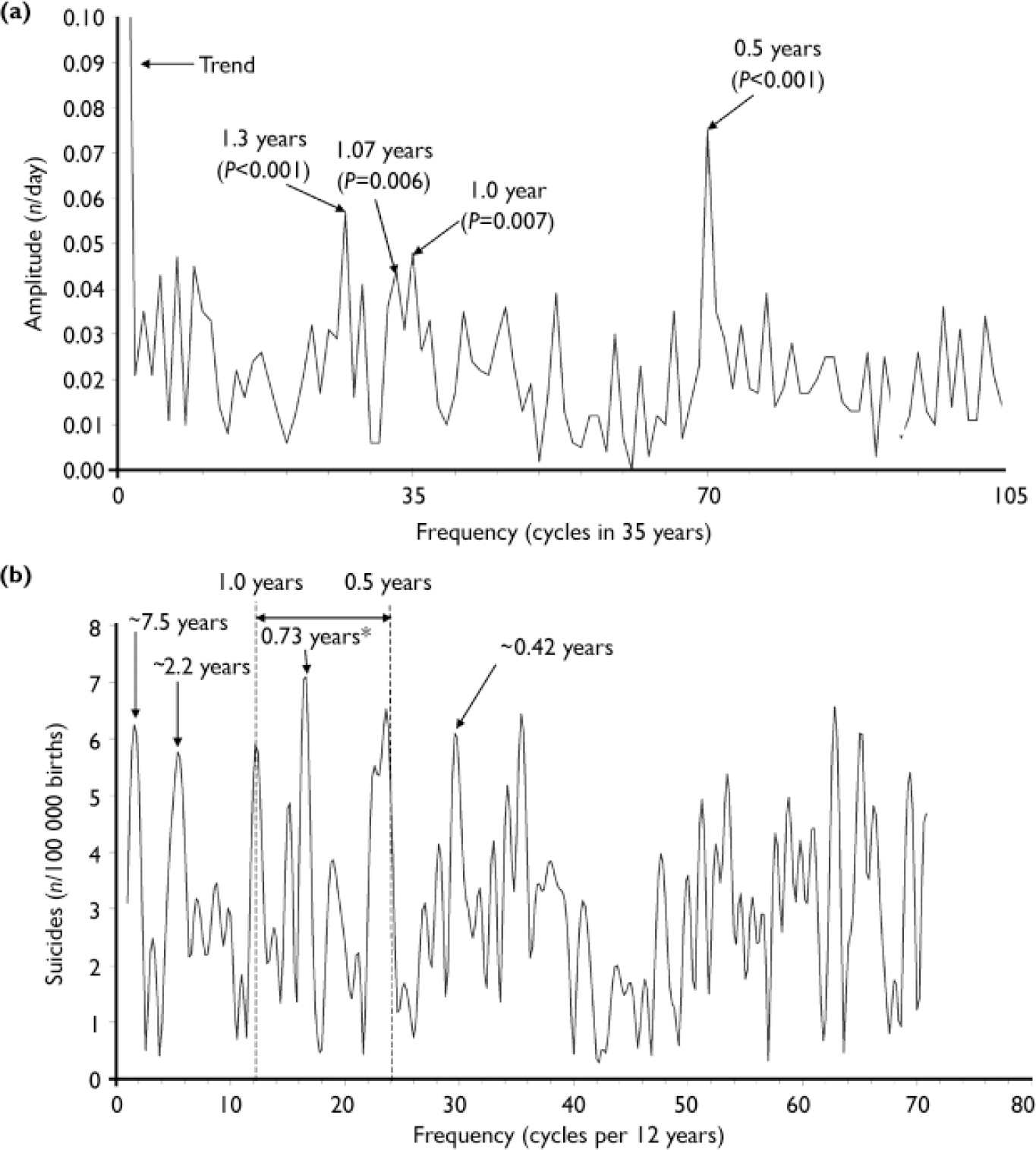Salib & Cortina-Borja (Reference Salib and Cortina-Borja2006) report an association between month of birth and suicides and this complements findings concerning the season of death in Minnesota. Along the scale of a calendar year, suicides peaked in April to June, which was later than mortality from heart disease and earlier than mortality from accidents. Our results from another continent, with a mid-continental climate, encourage generalisation to people born outside England and Wales. Both studies stacked data, at the outset of analyses, along the scale of the calendar year (Reference Halberg and MillsHalberg, 1973) or as monthly counts (Reference Salib and Cortina-BorjaSalib & Cortina-Borja, 2006), a limitation subsequently remedied by focus upon broader chronomes (Reference Halberg, Cornélissen and PankseppHalberg et al, 2005).
In unstacked data, chronomics resolves (along with trends and deterministic or other chaos) a spectrum of rhythms with many frequencies, in various fields (Reference Halberg, Cornélissen and OtsukaHalberg et al, 2001), including cis- and transyears, shorter or longer than a year (Reference Halberg, Cornélissen and PankseppHalberg et al, 2005).
Richardson et al (Reference Richardson, Paularena and Belcher1994) reported a periodicity of about 1.3 years for the speed of the solar wind measured by satellites. We found the same and other components of non-photic origin in physiological variables such as blood pressure and heart rate, each studied around the clock for up to decades (Reference Halberg, Cornélissen and OtsukaHalberg et al, 2001). Such components, also confirmed in the sigma of the speed and the proton content of the solar wind are variable, both in biomedicine and in physics, but they deserve the attention of those concerned with behaviour and can be revealed to the naked eye if the stacking is done after rather than before chronomics. The task remains to compare, before stacking, the chronomes of suicides at birth v. death on the same population and thereby to examine any contributions of space weather, among others, to a fatal as well as fetal hypothesis (Reference Salib and Cortina-BorjaSalib & Cortina-Borja, 2006), as attempted in Fig. 1, albeit with data from different populations.

Fig. 1 (a) Suicides in Minnesota according to calendar date of death (1968–2002); (b) suicides in England and Wales according to calendar month of birth. *Validated non-linearly: period=0.727 years (95% CI 0.703–0.751). Data from Salib & Cortina-Borja (Reference Salib and Cortina-Borja2006).




eLetters
No eLetters have been published for this article.